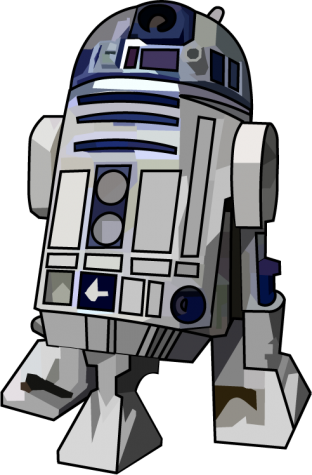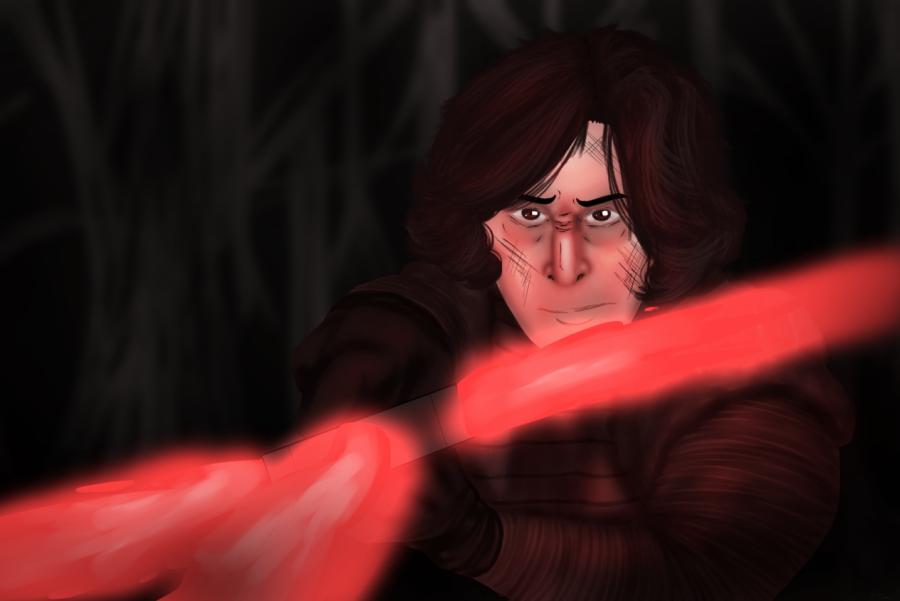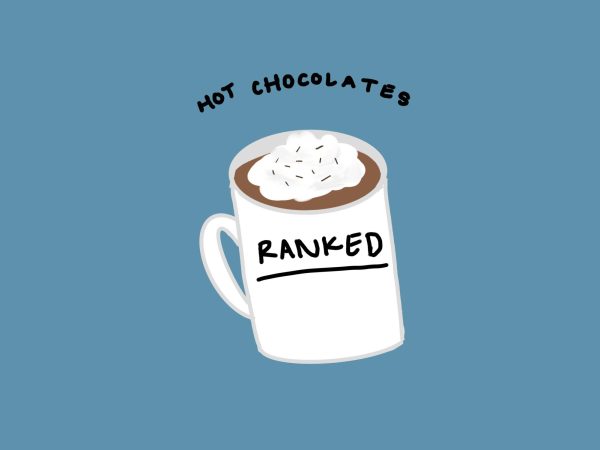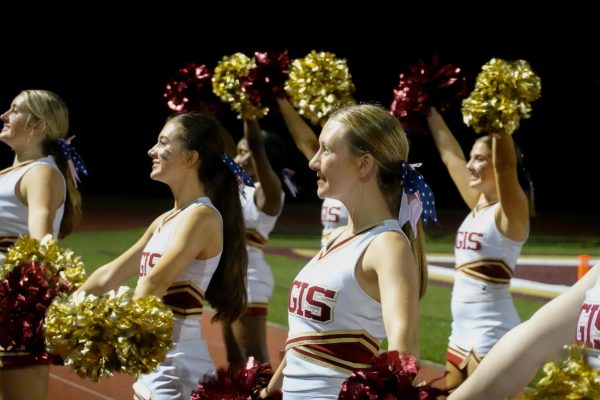A Tour De Force
Teachers and students weigh in on the “Star Wars” empire
Photo: E’nissa Golden
It seems like “Star Wars” has been a force, binding modern culture together since the premier of “Episode IV – A New Hope.” Whether they’ve seen the movies or not, many people in western society (and beyond) have heard about “Star Wars,” including 95% of Collierville campus student survey respondents. Over time, one movie turned into three, and those three movies evolved into an entire universe complete with T.V. shows and video games. Over 80% of student survey respondents have seen at least one “Star Wars” movie, and over 60% have seen at least one “Star Wars” series.
“Star Wars” has influenced culture beyond the movie industry, making its mark on conversations, philosophy and even consumerism. So what makes “Star Wars” such a successful, growing phenomenon?
The Popularity
One reason why “Star Wars” is still so relevant is that it has become required knowledge for some elements of pop culture. R2-D2 is a common icon, and you probably know what “Yoda speak” means or have heard “May the Force be with you” outside of the movies. People who haven’t seen “Star Wars” can feel left out of this shared experience.
Senior Maggie Emmendorfer had never seen any “Star Wars” movies until she watched all nine saga episodes in one week early this year, finishing with “The Rise of Skywalker” on Jan. 11. After her marathon, she was glad to know what was going on.
“I thought [the movies would] be super annoying and nerdy, but I really, really, really enjoyed it,” Emmendorfer said. “I know so much more now [about the jokes and references]… I go on Tik Tok or Instagram and I’m like, ‘Oh, I like that now.’ It’s nice.”
Eighth-grader Abraham Garcia has not seen any “Star Wars” movies, and this has impacted his conversations with others.
“People will be talking about ‘Star Wars’ and they’re like, ‘What do you think, Abe?’ and I’m like, ‘I don’t know, I haven’t seen ‘Star Wars.’ I’ll go to my uncle’s house and [he and my cousins will] start talking about Star Wars, and I’ll be completely lost because I haven’t seen ‘Star Wars,’” Garcia said. “I haven’t seen a single one. But I want to.”
Freshman Mayyadah Alzaben has never seen any of the movies either, but she isn’t in a rush to be in the loop.
“Some people are shocked that I haven’t seen ‘Star Wars’ and ask how I could make it through life without seeing any of them,” Alzaben said. “[But] it’s never been a big priority to me, just something that I should check out one day.”
That indifference is the exception, though, not the rule. Middle and upper school science teacher Mike Smothers remembers the excitement surrounding the first film, now known as “Episode IV – A New Hope,” which he saw in theaters at around eight years old.
“My brother and I were just like, ‘Oh, this is amazing!’ We thought it was so cool,” said Mr. Smothers. “I remember walking out of the theater, and there was a line from the ticket booth all the way out into the parking lot of people waiting to go in and see the film. And this was in August, so it had been out [since May], and it was still that popular.”
That popularity has endured even through Disney’s controversial acquisition of the “Star Wars” franchise in 2012. While upper school science teacher Ethan Sullivan appreciated the character of Rey, the main protagonist, in episodes seven, eight, and nine, he was certainly not a fan of the final trilogy’s storyline.
“I don’t know if they did a really good job tying everybody’s plotlines together. I think they didn’t,” Mr. Sullivan said. “There was hardly any coherence… On one level, you could say that’s okay, because of course [the sequels] don’t exist in a vacuum. But at the same time, you would hope that there’d be enough plot, enough character development, that they kind of do make sense on their own.”
Mr. Smothers, on the other hand, sees Disney’s changes in the development of the main saga as a sign of changing times.
“[The later movies] are a good reflection of where our culture is now versus where it was in the 70s,” Mr. Smothers said. “The first “Star Wars” is very much a World War II film. This newest trilogy of the Skywalker saga is much more a reflection of where we are now as a society, just as the original series was where we were then.”
The Philosophy
Maybe “Star Wars” draws so many people in because of its philosophical and religious connections, as well as its relatability. Some, like Mr. Smothers, think the franchise is so popular because people can relate to it. He sees elements of author and editor Joseph Campbell’s “hero’s journey” idea, the study of a common plot pattern with characters like a hero, villain, and mentor, in “Star Wars.”
“I think [‘Star Wars’ is] good storytelling. I think it’s good mythology,” Mr. Smothers said. “Using this hero cycle, Lucas wrote ‘Star Wars’ with a lot of this in mind to kind of make it something more appealing. So I think it’s something that resonates with us because it speaks to those hero stories that we find compelling.”
Upper school religion and ethics teacher Kyle Slatery found the religious undertones to be a point of interest.
“I think the most prevalent religion in the movies is Daoism. After that, it’s probably debatable between Buddhism and Christianity or Judaism, with this whole sort of Messianic idea running through it of the chosen one who would restore balance to the force,” Mr. Slatery said. “That whole ‘balance to the force’ thing is very Daoist.”
The word “Dao” means “the way” and is described as the “flowof the universe.” Balance, notably the balance between contrasting forces within each person, is a central point of Daoism. Emmendorfer noticed this battle between good and evil as a central theme of the saga.
“No one is inherently good or evil. You have Anakin Skywalker who obviously becomes Darth Vader, and then with Kylo Ren, he was a good guy, and then a bad guy, then a good guy again,” Emmendorfer said. “I think that’s the biggest trend that I’ve seen.”
In “Star Wars,” each side of the Force has positives and negatives. The light side is about peace and tranquility, but can lead to apathy. The dark side is about passion and emotions, but leads to selfishness and anger. As Mr. Slatery noted, dark and light are “just different personality traits of the same cosmic force, or even us as human beings.”
Mr. Smothers pointed out redemption as another relatable aspect of the series.
“We see Darth Vader, this evil character, and we realize that this is [Luke’s] father. We get to see this struggle that goes on within him and ultimately, a triumph over that, and it’s his redemption. The third trilogy carries the same idea,” Mr. Smothers said. “It’s not just this external struggle, but that internal struggle of finding a way to redeem yourself from actions you’ve done in the past.”
The Conversations
“Star Wars” might also be so popular because it creates dialogue. Despite its common emotional and philosophical elements, people just can’t seem to agree about what films are good, bad, funny, or just unbearable. The prequels in particular have been infamously mocked (lovingly and not so lovingly) since their releases. For example, if you’re a fan, chances are you have a pretty strong opinion about Jar Jar Binks.
“A bunch of my friends really love ‘Star Wars,’ but when I was watching the prequels, they were like, ‘Oh I hate the prequels, they’re all so bad except for these 10 minutes,’” Emmendorfer said. “When I was watching the new ones, they were like, ‘Yeah the new ones are all really bad,’ and I’m like, ‘Do you like ‘Star Wars’ at all?’”
Mr. Sullivan argued that Anakin Skywalker’s angsty transformation into Darth Vader in the prequels was unsatisfying.

“I didn’t feel good about the development,” Mr. Sullivan said. “I wouldn’t go back and watch those movies again to watch [Skywalker] develop because it wasn’t enjoyable.”
Mr. Smothers suggested that the reason the prequel trilogy “fell flat” was not just bad production or character development but high expectations.
“In times where we’re not really sure of anything, having some kind of certainty about the stories resonates with us,” Mr. Smothers said. “These movies are held to a higher standard because for a lot of people, it has more meaning now than it did in the past, because [people are] putting so much more [investment] into that universe based on what they’re seeing in the world
around them.”
Perhaps Star Wars is so successful because of how intergenerational it is, even if the fact that it has covered such a lengthy period of time contributes to its more recent criticism.
“It’s a movie that adults can enjoy. Kids are really going to get into it because it’s got aliens and lasers and spaceships and stuff,” Mr. Smothers said. “It’s also neat that they can come back to it later, and there’s greater depth that they still haven’t gotten to yet, so I think it’s almost, in some ways, bigger.”
Overall, the student body doesn’t dislike the prequels all that much. The majority of respondents, 69.9%, said they think the prequels are fine or better.
Episodes one through three are not the only “Star Wars” movies that have been met with backlash, though. The recently completed sequel trilogy has also seen its fair share of criticism. Senior Silas Rhodes was not a fan of any part of episodes eight and nine.
“I did hate [‘The Rise of Skywalker’]. I’ll say this, I didn’t hate it as much as ‘The Last Jedi,’ but that was an absolutely trash movie. Possibly the worst ever, that I’ve ever seen,” Rhodes said. “I might say that ‘Cats’ the musical movie is better than ‘The Last Jedi.’ ‘The Rise of Skywalker’ was too long, why are there horses in space, and what are they doing?”
Emmendorfer, however, wishes the newer films would be appreciated as they are.
“This is what’s intended to happen. There’s no other storyline. What happened, happened and you just kind of have to take it as it is,” she said. “I would like it better if people just kind of celebrated the things that happened, especially in ‘The Rise of Skywalker.’”
Emmendorfer also really enjoys the characters (and actors) in the sequels.
“I love Kylo Ren,” Emmendorfer said. “I think he’s the best-written character in the entire ‘Star Wars’ saga. It’s true, Adam Driver is the actor of our generation.”
The Growth
Aside from the main saga, the franchise includes television series, “anthology” movies, video games, books, endless merchandise, and even dedicated parks at Disney World and Disneyland.
Mr. Sullivan remembers the “Star Wars” novels and Nintendo video games from when he was a teenager, and Emmendorfer took note of how the franchise has permeated society, especially merchandising even for those who hadn’t interacted with it directly.
“It’s just such a huge pop culture thing and I felt so left out of it for a long time,” Emmendorfer said. “Usually when you see merch in Target, you’re like, ‘Oh my gosh, it’s my thing! They have it in Target!’ But there’s Star Wars stuff literally everywhere. There are Build-a-Bears, there’s stuff in Target, there’s t-shirts in every store you go to.”
According to the Telegraph, as of 2016, “Star Wars” had earned over $32 billion in merchandise sales – and that’s before the release of the last two saga movies as well as “Rogue One” and “Solo.”
“Star Wars” has been going strong for over four decades, so where will it go from here? Disney obviously plays a huge role in the direction of the franchise since their acquisition of Lucasfilm, having put out “Rogue One,” “Solo,” and the extremely popular Disney + series, “The Mandalorian.”
Mr. Sullivan suggested that Disney should move away from cinematic releases, which could help the company avoid the harsh criticism that plagued the sequels. “It seems like people really like the Mandalorian, and Disney+ is really trying to get subscribers,” Mr. Sullivan said. “So I think that a lot of [future ‘Star Wars’ content] will be on Disney+, whether they develop branch-off movies that are a two hour whatever movie, or if it just becomes more series, developing different characters and arcs and paths, but I think that’s where it’ll be. I could envision them avoiding the theater and sticking to Disney +.”
Disney + has already proven to be a lucrative platform for Star Wars viewing. Emmendorfer used the platform for her “Star Wars” marathon, and Garcia cites Disney+ as part of the reason his interest has been sparked.
“Obviously everybody talks about ‘Star Wars’ because it’s ‘Star Wars,’” Garcia said. “I got Disney+ and then I saw that they had ‘Star Wars’ and I was like, ‘Okay, I’m gonna start watching this.’”
Mr. Sullivan also explained that making “Star Wars” easier to access through the online platform while allowing for more creative storytelling would benefit the franchise.
“When you say [to a director], ‘Hey, look, you can make eight one-hour episodes. And you get that eight hours of content, and you can do whatever you want with it. And just forget the rest of it, in terms of [the] main arc and even tangential things,’ I think you can do a lot,” Mr. Sullivan said. “If you give someone free rein over that intellectual property, and say, ‘Hey, just make a cool story,’ I think that’s a good direction to take it.”
Whether it be a “Star Wars” themed Build-A-Bear, a TV show, a new movie, a book, or just a conversation with a friend, “Star Wars” is such a phenomenon because it is so easy for people to lose themselves in it. But despite its magnitude in pop culture, Mr. Slatery wonders if its actual impact might be limited to the genre.
“I feel like its biggest impact exists in a bubble in a lot of ways, in a cloud, in an internet conversation, or in a news article,” Mr. Slatery said. “Its cultural impact, I don’t know if it has one except to just impact the whole genre of science fiction… more so than our real world or society.”
Mr. Slatery did, though, acknowledge the personal impact something like Star Wars can have on people.
“[It’s] distracting us from our daily jobs, daily lives,” he said. “In a good way.”
Many consume fiction as a way to escape the monotony of their daily lives, and the fantasy world of “Star Wars” has grown to the point that it is possible to consume its media almost constantly. That may be the true draw of the franchise.
You might have picked up this issue of the Lodge because it has “Star Wars” on the cover, and you just spent time reading three pages about why “Star Wars” is such a phenomenon. Think about whether you would have done so if the subject were the new “Jumanji” movie instead – maybe not.












